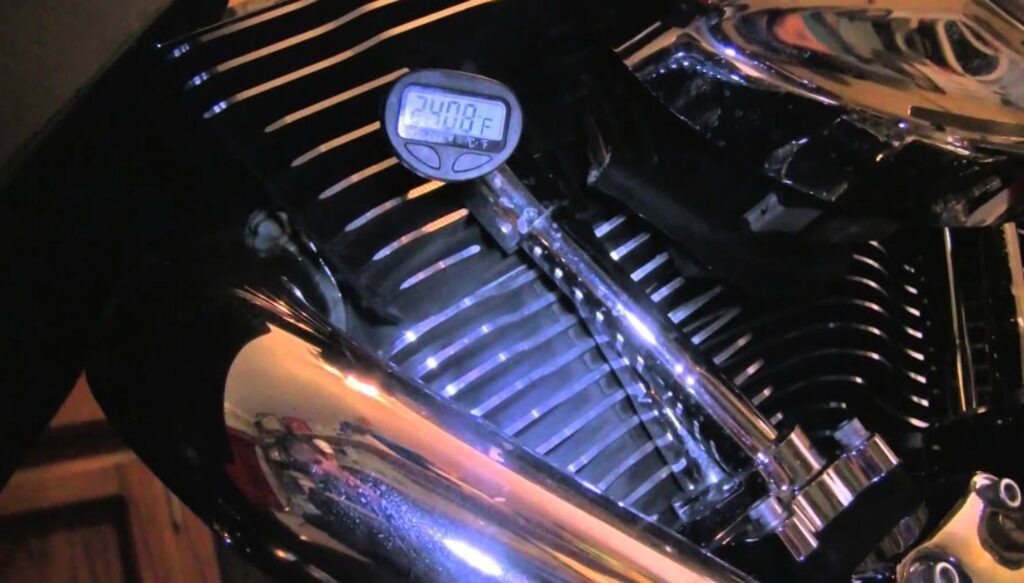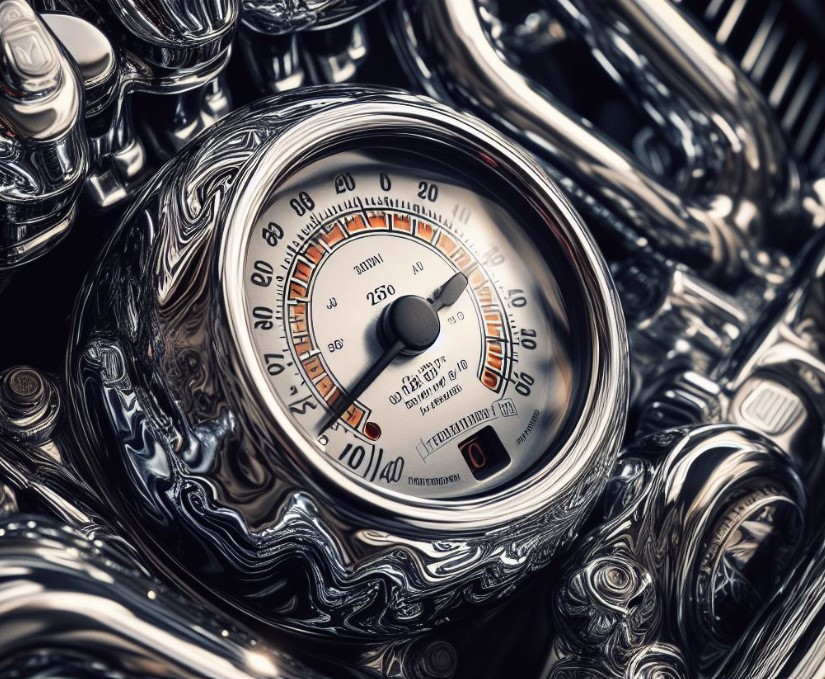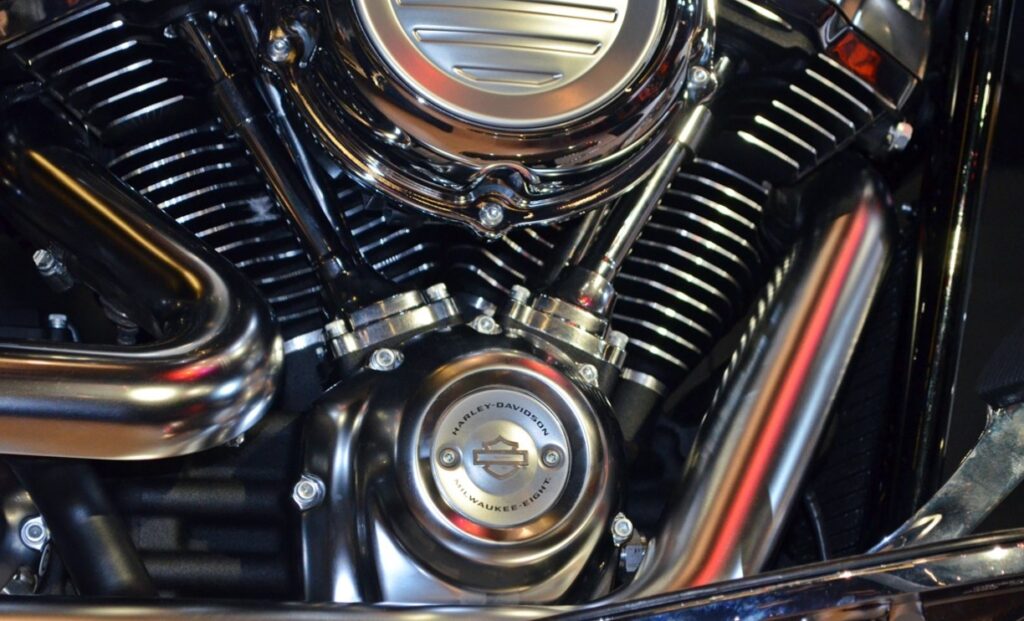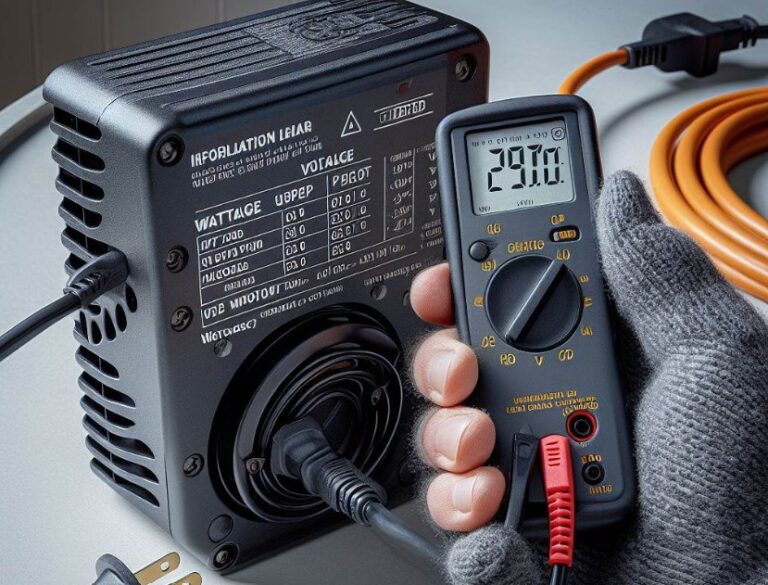How Hot Does A Harley Engine Get? [Explained]
Understanding the operational temperature of a Harley engine is crucial for every rider. So, the question arises How Hot Does A Harley Engine Get? It’s a question that intertwines with the performance, maintenance, and longevity of these iconic motorcycles. Harley engines, known for their power and endurance, operate under significant heat, making this topic essential for Harley enthusiasts and mechanics alike.
Key Takeaways
- Harley engines can reach temperatures of 230-260°F (110-127°C) during normal operation.
- Factors influencing engine temperature include ambient temperature, riding conditions, and maintenance.
- Excessive heat can lead to engine damage, affecting performance and lifespan.
- Regular maintenance and proper use are key to managing engine temperatures.
How Hot Does A Harley Engine Get?
A Harley engine typically gets as hot as 230 to 260 degrees Fahrenheit (110 to 127 degrees Celsius) during normal operation.

Engine Temperature Range and Significance
Harley engines are designed to withstand high temperatures, essential for their optimal performance. The average temperature range of 230-260°F is a benchmark for healthy engine operation.
Factors Influencing Temperature
Several factors can cause variations in this temperature range. Ambient temperature plays a significant role. In hotter climates, the engine tends to run warmer.
Riding conditions, such as city traffic or open highways, also impact engine heat. Maintenance, including regular oil changes and coolant levels, is critical in managing these temperatures.
Impact of High Temperature
Excessive heat is not just a number on a gauge; it’s a potential threat to your Harley’s engine. High temperatures can lead to oil breakdown, increased wear on engine components, and in severe cases, engine failure. Understanding and managing engine heat is pivotal for the longevity and performance of your Harley.
Maintenance and Heat Management
Proper maintenance is the frontline defense against excessive engine heat. Regular oil changes, using quality lubricants, and keeping the cooling system in top shape are essential.

Role of Engine Oil
Engine oil plays a multifaceted role in managing engine temperature. It lubricates moving parts, reducing friction, and therefore, heat. Additionally, it helps in dissipating the heat generated by the engine. Using the right oil, as recommended by Harley-Davidson, is crucial for heat management.
Cooling System Maintenance
The cooling system, comprising the radiator, coolant, and associated components, is vital in maintaining optimal engine temperature. Regular checks and maintenance of the cooling system ensure it operates efficiently, keeping engine temperatures within safe limits.
Riding Practices and Engine Temperature
The way you ride your Harley also impacts its engine temperature. Aggressive riding, constant high revs, and prolonged idling can lead to higher engine temperatures.
Impact of Riding Style
Riding style significantly affects engine heat. Smooth, consistent throttle control and avoiding prolonged idling can help in maintaining lower engine temperatures.
Importance of Traffic and Terrain
Riding in heavy traffic, where airflow is limited, can cause the engine to heat up quickly. Similarly, challenging terrains, requiring constant high-power output, can also raise engine temperatures. Being mindful of these conditions can help in managing your Harley’s engine heat.
Engine Temperature Indicators and Monitoring
Harleys are equipped with temperature gauges and indicators, providing real-time information about engine heat.

Understanding Temperature Gauges
The temperature gauge on your Harley is not just another instrument; it’s a window into the health of your engine. Understanding how to read and interpret this gauge is crucial for any rider.
Importance of Regular Monitoring
Regularly monitoring engine temperature helps in the early detection of potential issues. It enables timely intervention, preventing damage due to overheating.
How Do I Keep My Harley Engine Cool?
Keeping your Harley engine cool is essential for its longevity and performance. Here are some effective ways to manage the engine temperature:
- Regular Maintenance: Regular oil changes, using the recommended oil type, ensure optimal lubrication and heat dissipation.
- Coolant Check: For liquid-cooled Harley models, regularly checking and maintaining the coolant level is crucial.
- Airflow Management: Ensuring good airflow around the engine, especially in slow-moving traffic, helps in cooling.
- Upgrades: Consider upgrading the cooling system with high-performance parts, like better radiators or cooling fans.
- Riding Style: Avoid prolonged idling and aggressive riding, as these can increase engine temperature.
What Is The Operating Temperature Of A Harley 110?
The operating temperature of a Harley-Davidson 110 engine, typically found in larger and high-performance models, usually ranges between 230 to 260 degrees Fahrenheit (110 to 127 degrees Celsius).

This range is considered optimal for efficient engine performance and longevity. However, factors such as ambient temperature, riding conditions, and maintenance can influence this temperature range.
How Many Degrees Is A Harley Engine?
A Harley engine operates within a temperature range of approximately 230 to 260 degrees Fahrenheit (110 to 127 degrees Celsius). This range is a general guideline for optimal engine performance. It’s important to note that variations can occur based on model, riding conditions, and maintenance practices.
How Hot Can A Motorcycle Engine Get?
Motorcycle engines, including those of Harleys, can get quite hot during operation. On average, they operate at around 230 to 260 degrees Fahrenheit (110 to 127 degrees Celsius).

However, under extreme conditions, such as heavy traffic, high ambient temperatures, or aggressive riding, the engine temperature can rise even higher.
In some cases, temperatures can reach up to 300 degrees Fahrenheit (149 degrees Celsius) or more. It’s critical to monitor the engine temperature and take steps to prevent overheating, as excessive heat can lead to engine damage.
Conclusion
The question, how hot does a Harley engine get, is pivotal in understanding and maintaining your Harley-Davidson motorcycle. The average operational temperature of 230-260°F, influenced by various factors, underscores the importance of maintenance, riding practices, and monitoring. Keeping your Harley within this temperature range ensures its performance, longevity, and enjoyment on the road.
Top FAQ’s
How can I modify my Harley to run cooler?
To help your Harley run cooler, you can ensure regular maintenance, use high-quality engine oil, upgrade to a more efficient cooling system (like installing a larger radiator or high-performance cooling fans), and consider using engine tuners that optimize fuel-air mixtures for better combustion efficiency.
Does the color of my Harley affect its engine temperature?
The color of your Harley has a minimal effect on engine temperature. While darker colors absorb more heat, the impact on the engine’s operating temperature is negligible due to the engine’s internal heat generation being significantly higher than any heat absorbed from the exterior color.
Can frequent short trips cause my Harley’s engine to run hotter?
Frequent short trips can lead to a Harley’s engine running hotter over time. This is because the engine doesn’t reach its optimal operating temperature on short trips, leading to incomplete combustion and increased engine deposits, which can insulate heat.
How do I know if my Harley’s engine is overheating?
Signs of an overheating Harley engine include a temperature gauge reading unusually high, reduced engine performance, unusual smells (like burning oil), and in some cases, smoke from the engine area. If you notice these signs, it’s important to stop riding and let the engine cool down before checking for potential issues.

Welcome to the exhilarating world of Matt Rex, a professional car racer turned renowned vehicle enthusiast. Immerse yourself in his captivating blog as he shares heart-pounding adventures, expert reviews, and valuable insights on cars, trucks, jets, and more. Fuel your passion for speed and discover the beauty of vehicles through Matt’s engaging stories and meticulous expertise. Join the ever-growing community of enthusiasts who find inspiration and expert advice in Matt Rex’s blog—a digital hub where the thrill of speed meets the pursuit of knowledge.







